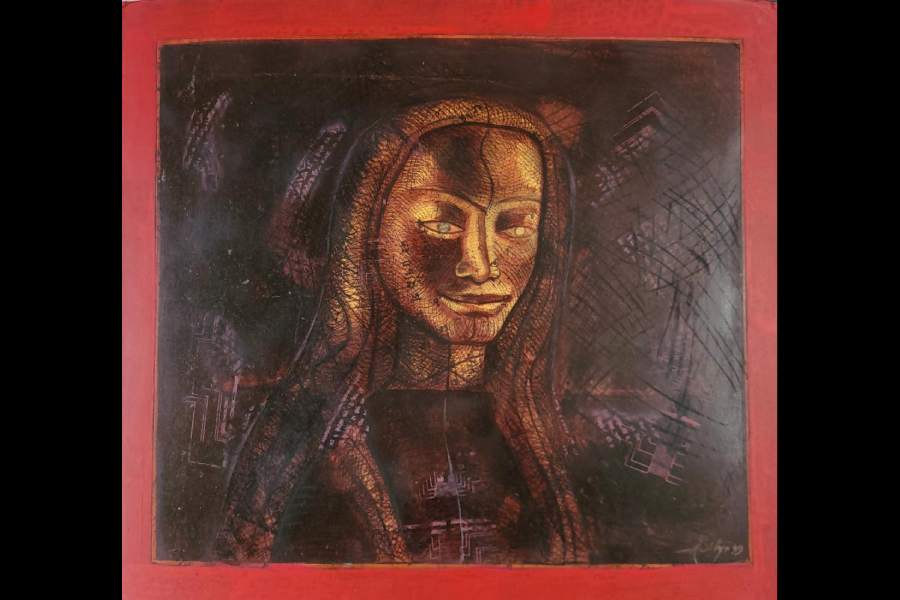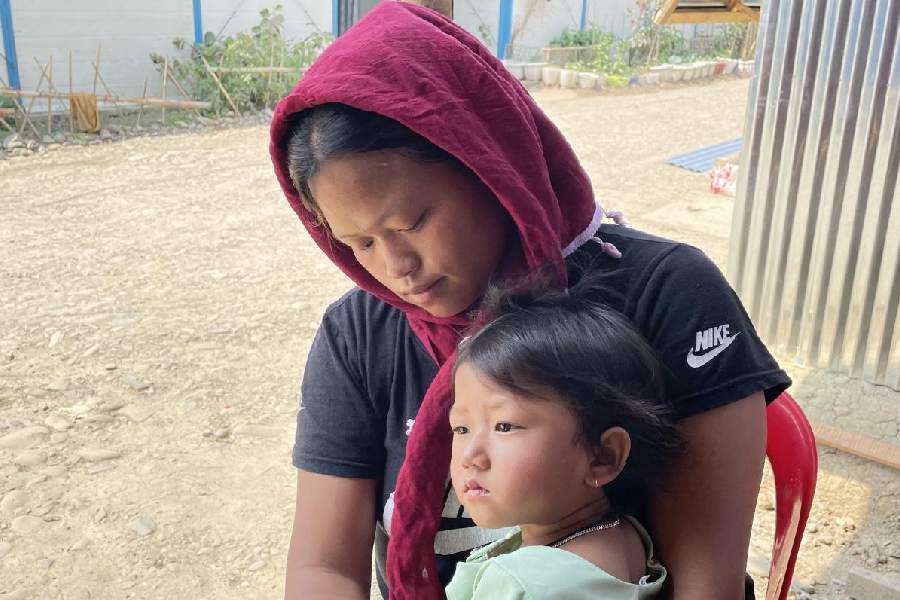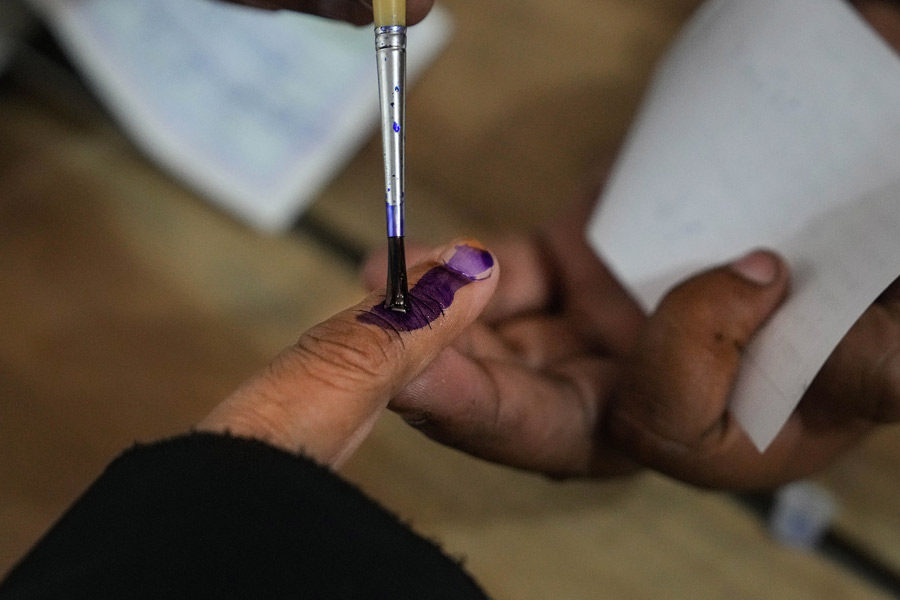The International Association of Art-India, Unesco’s official partner, and Chitro Charitra held a rather curious exhibition titled Through His Lens: Tribute to the Maestro Jayanta De at the Indian Council for Cultural Relations in December. Jayanta De was a Leftist photographer. The exhibition was supported by the state Judicial Museum and Research Centre. The flyer for the show made a rather tall claim: “Featuring the artworks of Indian masters.” Namely, Abanindranath Tagore, Akbar Padamsee, Gaganendranath Tagore, Jamini Roy, M.F. Husain and many other practitioners, both well-known and unknown. The works of Sanatan Dinda, the darling of the Durga Puja-art fest circle, featured in this overcrowded group, along with other pieces of worse-than-amateurish quality. The works almost overlapped each other as they struggled for space on the cramped walls of the Bengal Gallery. In effect, it was thus a hodgepodge which made it impossible for viewers to sort the wheat from the chaff.
Some of the works were said to belong to the IAA-India, and they included those by the brothers, Gaganendranath (a mendicant, perhaps in a trance) and Abanindranath (a little puppy), in rather unfamiliar styles. The exhibition opening was also preceded by a series of never-ending speeches, stream of consciousness style. The speakers included Lubna Hassan, the national convenor of IAA-India, who made rather singular claims about the artistry of Leonardo da Vinci.
Husain’s work was an impromptu sketch of a horse and carriage, the kind he did for his innumerable fans. Ram Kumar’s abstract houses and Akbar Padamsee’s portrait of a bearded man with dreamy eyes were in stark contrast to the gaudy colours of Rukmini Varma’s princess wearing an elaborate chignon. Born in 1940, the latter belongs to the Travancore royal family and is a descendant of Raja Ravi Varma. The painting looked like it was the victim of an amateurish attempt at restoration. Irrespective of quality, its bright palette offered a welcome relief from the dullness of the show.
Among the other painters from the south were Akkitham Narayanan, whose moss green and red work with calligraphic strokes stood out. So did P. Perumal’s oil on canvas, which depicted a bullock cart and came close to abstraction. Velu Viswanandhan’s red paper work couldn’t be missed. Thota Vaikuntam’s stylised figures of men and women from the Telengana region are instantly recognisable.
Contemporary artists from Bengal were all there and fully in form. Dharmanarayan Dasgupta, who has all but disappeared from the art scene, made a rare appearance with a rather unusual work. Suhas Roy’s Radha returned after a long break. Bijan Choudhury’s statuesque figures were very different from the angst-ridden contortions of his contemporaries. Lalu Prasad Shaw’s Kalighat-pat style painting was of a cat holding a fish in its mouth. The whimsical line drawing of a man in motion could not be the handiwork of anyone but Partha Pratim Deb. Aditya Basak’s dark lady with the soft modelling of her features had the beauty and dignity of African sculpture (picture).
There were some sculptures too. Among them was Bimal Kundu’s three-tiered birds in flight which came very close to abstract form.










